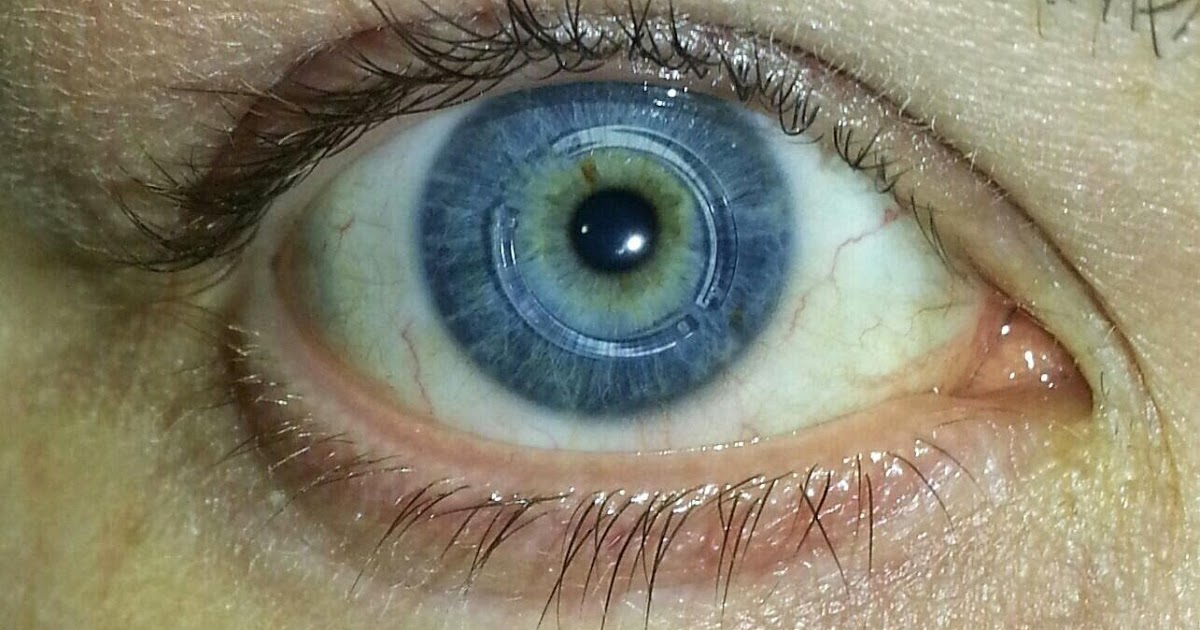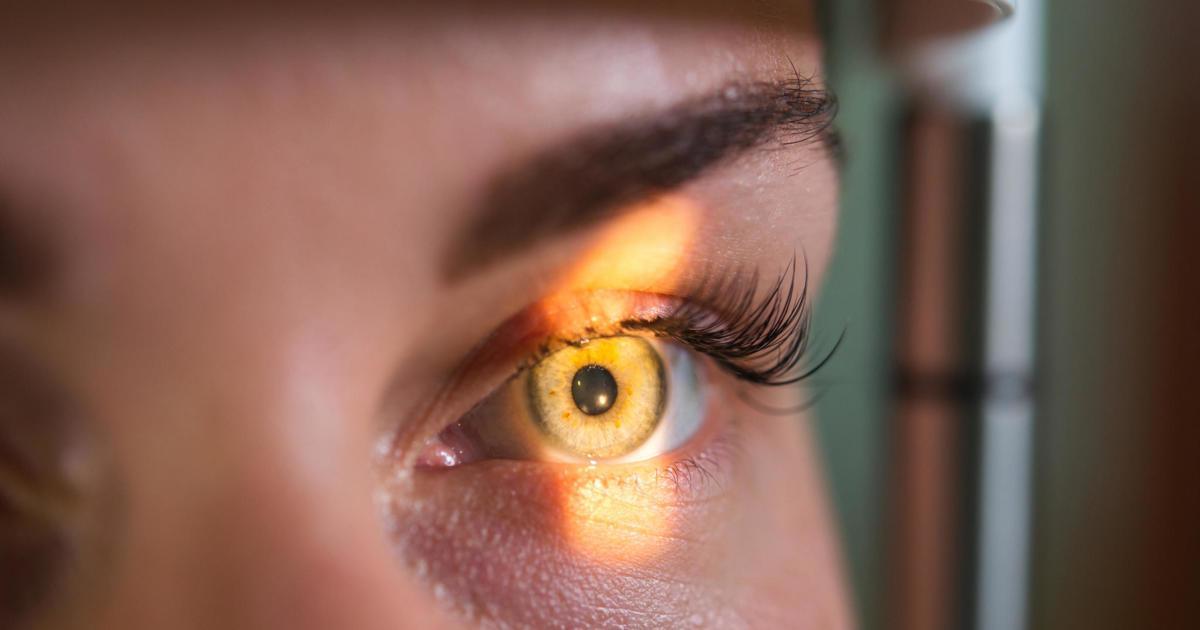What Causes Double Vision?
Double vision, also referred to as ghost imaging, is a condition where copies of a single image are seen through one or both eyes. Double vision in a single eye is often related to a physical defect in that eye. When light passes through the defective part, it is scattered on the retina at the back of the eye, causing the patient to see multiple images. If a patient is experiencing double vision in both eyes, it is important for them to see a doctor, as this can be a symptom of a more serious neurological condition. Depending on the cause, double vision can be temporary or a long-term condition. There are several common causes of double vision, some more concerning than others. Learn about them now.
Keratoconus

Keratoconus is the gradual transition of the cornea from its normal shape to a bulging or cone shape. The cornea is the outer layer of the eye that covers the lens and the pupil. When it is normal, it allows light to pass through the pupil to the back of the eye. If it is misshapen, it will alter the light, causing it to send multiple images to the retina. This will only cause double vision in the affected eye.
Some individuals have a genetic predisposition for this condition. Other causes include prolonged exposure to ultraviolet rays and chronic eye irritation. In its early stages, double vision caused by keratoconus can be corrected through prescription glasses. As the condition progresses, it may require special contact lenses or a corneal transplant.
Refractive Surgery

Refractive surgery is one of the most common elective procedures done today. It is an out-patient procedure that can correct several vision issues such as nearsightedness or farsightedness. In the most common form, the doctor changes the shape of the cornea using a small laser. These changes are subtle and take some time to heal. However, any changes to the cornea affect the way light passes through.
In many cases, surgery patients experience mild double vision as they recover from the surgery. These issues normally resolve themselves within ninety days of the procedure. If a patient still experiences vision issues six months after the surgery, the doctor may recommend a second corrective procedure.
Cataracts

Many individuals encounter cataracts as they age. In fact, they are one of the most common vision issues among individuals over fifty years old in the world. These imperfections are a condition of the eye's lens, which rests between the cornea and pupil. The job of the lens is to focus the light that passes through the cornea so a clear image hits the retina. This clear lens is made primarily of protein and water, and as individuals age, the protein can clump together into a cataract, causing a cloudy image. The distortion of the image can also lead to the ghost images of double vision. Fortunately, laser surgery can correct most cataracts.
Sjogren's Syndrome

Sjogren's syndrome is an autoimmune disease that affects moisture-producing glands in the body. Like all autoimmune diseases, it involves the body's immune system attacking healthy parts of the body. Other signs of this syndrome include dry mouth and joint pain. Because the function of the tear glands is impacted, patients who suffer from Sjogren's syndrome often have to deal with severely dry eyes. Proper vision depends on a moist surface on the cornea. Double vision can occur when light hitting the dry cornea is altered or scattered. There is no cure for this syndrome, so treatment focuses on relieving symptoms. Patients are asked to drink extra fluids to aid the body in producing tears and saliva. Artificial tears and medicated eye drops are also common prescriptions for dry eye relief.
Severe Migraines

Migraine headaches affect more than thirty-eight million individuals in the United States. This throbbing, painful headache can last up seventy-two hours. The origins of migraines are not completely understood, but studies point to changes in brain chemistry as well as cranial nerve issues. Because the double vision associated with severe migraines involves nerves rather than the physical structure of the eye, double vision will be seen with both eyes. For some individuals with migraines, double vision may be part of the migraine aura, a series of symptoms that happen in the pre-migraine stage. For others, double vision is part of the migraine experience itself, and as the headache ends, the double vision clears.
Eye Trauma Or Injury

Double vision can be a medical issue stemming from the effects of eye trauma or injury. There are a few mechanisms of how an injury or trauma can result in double vision. When an injury and or trauma to the eye and its surrounding region occurs, the muscles and nerves in the eye can become damaged. The human eye forms its image from the brain's combination of the representations that come from both eyes. When there is damage to the nerves that manage eye movements or damage to the muscles responsible for moving the eyes, it can result in double vision.
Some injuries to an individual's eye can cause fluid and blood to accumulate in the areas surrounding the eye. When fluid abnormally builds up in areas around the eye where it does not belong, it places pressure on the nerves and muscles around the eye, as well as the eye itself. The increased pressure can cause the muscles and nerves to malfunction and result in double vision.
Thyroid Dysfunction

An individual affected by thyroid dysfunction may experience double vision as a result of their condition. The thyroid is a gland in the body responsible for the regulation of numerous processes with the production and administration of hormones. Individuals with a thyroid gland that does not function correctly can experience an associated complication that is called thyroid eye disease. Thyroid eye disease occurs when an individual's immune system abnormally activates receptors in the thyroid gland that result in the excessive production of hormones.
The immune system response that causes thyroid issues is also known to adversely affect the individual's eyes. The immune system attacks the healthy fat and muscle tissues behind the individual's eyes. This abnormal response results in inappropriate inflammation behind the eyes that cause the muscles to become stiff. The eyes become swollen, sore, red, and watery. The muscles cannot move the eyes properly, and double vision occurs because the brain is unable to combine both of the eye's representations correctly.
Myasthenia Gravis

Double vision can be the result of a disease called myasthenia gravis that causes voluntary skeletal muscles to become excessively weak and fatigued with regular use. The muscle weakness myasthenia gravis causes progressively worsens with the normal use of the affected muscle. Any of the muscles in the body can be affected, but the muscles of the throat, face, and eyes are most commonly affected. The reason behind this is these are the voluntary skeletal muscles utilized the most in everyday life.
Weakness in the individual's eye muscles is often the very first symptom of myasthenia gravis to manifest. Muscle weakness is defined as an inability to produce a muscle movement with a maximized effort to do so. When an individual has weakness in the muscles responsible for eye movement due to myasthenia gravis, the eyes are unable to work together with each other and the brain to create a proper depth of field. This discoordination causes the individual to experience double vision.
Multiple Sclerosis

Multiple sclerosis, which can cause an affected individual to experience double vision, is an autoimmune disorder where an individual's immune system abnormally attacks the healthy tissues of the central nervous system or the optic nerves, brain, and spinal cord. It is known to be a very debilitating disease because it causes the patient's central nervous system nerves to malfunction when sending and receiving signals to and from the rest of the body. The optic nerve is the main nerve responsible for the transmission of visual information impulses from the individual's retina to the vision center of the brain.
Even though it is technically a part of the eye, the optic nerve is also part of an individual's central nervous system. Multiple sclerosis causes the immune system to attack the protective myelin sheath that covers the nerves and allows for the smooth transmission of electrical impulses. Because the optic nerve is a part of the central nervous system and is made out of nerve or ganglionic cells, multiple sclerosis can disrupt the normal transmission of visual images through the optic nerve to the vision center of the brain. This disruption causes a number of vision abnormalities, including double vision.
Aneurysm

A brain aneurysm can cause an affected individual to experience double vision as a result of their condition. When a weakened region of the arterial wall fills with blood and bulges in the brain, it is called a brain aneurysm. An aneurysm can be the result of trauma or another underlying condition. An aneurysm in the brain can remain unruptured for an extended period, or it can rupture. A ruptured aneurysm is a life-threatening and urgent emergency. An unruptured aneurysm is a projection of tissue in a place where it does not belong.
Aneurysms can press on any surrounding organs or structures just like a projection of any other tissue in a place where it does not belong. When a brain aneurysm occurs in the area near an individual's eye, it can cause some of the nerves connecting the eye to the brain to become compressed. The compressed nerves are unable to transmit the electrical impulses that feed the image from the eyes to the brain. This disruption in the nerve pathway can cause a patient to have blurry and or double vision.
